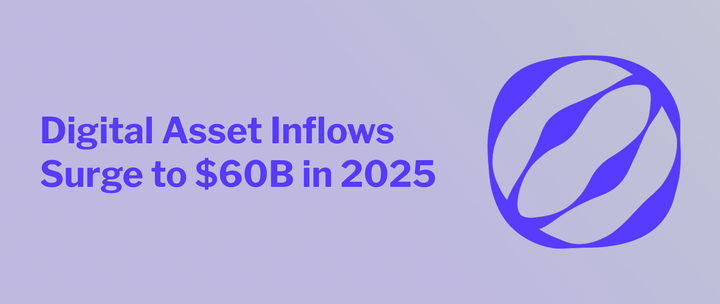Mitosis: Unleashing the Programmable Liquidity Revolution in DeFi

Introduction
Imagine a world where your liquidity isn't just sitting in a boring pool, locked away like a dragon's hoard. Instead, it's a dynamic programmable superhero, zipping across blockchains, earning yields, and flexing its financial muscles in ways you never thought possible. That’s Mitosis, a Layer 1 blockchain protocol that’s not just redefining liquidity but rewriting the rules of DeFi itself. Let’s dive into this electrifying revolution and explore why Mitosis is the spark DeFi’s been waiting for.
The Problem: Liquidity’s Locked-Up Blues
DeFi’s been a wild ride, but it’s got a dirty little secret: liquidity fragmentation. Picture this, your ETH is chilling in an Ethereum Uniswap pool, but you can’t use it to snag yields on Solana or collateralize it on Aave without jumping through hoops like a circus poodle. Assets are trapped in isolated chains and protocols, leading to inefficiencies, volatile yields, and missed opportunities. It’s like owning a fleet of sports cars but only being able to drive one at a time. Worse, the big players, whales with deep pockets, score exclusive deals, leaving retail liquidity providers (LPs) stuck with crumbs. Sound fair? Nope. Enter Mitosis, the game changer that’s here to flip the script.
Mitosis: The Programmable Liquidity Wizard
Mitosis isn’t just another blockchain, it’s a Layer 1 powerhouse designed to make liquidity programmable, liquid, and accessible. Think of it as the Tony Stark of DeFi, building a suit of armor for your assets that lets them fly across chains, earn yields, and even govern their own destiny. Here’s how Mitosis pulls off this mind-blowing feat:
- Ecosystem-Owned Liquidity (EOL): Mitosis introduces EOL, a community-driven model where LPs pool their assets into Mitosis Vaults and receive miAssets tokenized representations of their deposits (e.g., deposit ETH, get miETH). These miAssets aren’t just shiny tokens; they’re your ticket to voting on liquidity allocation through a decentralized autonomous organization (DAO). Suddenly, retail LPs have the bargaining power of institutional giants, making decisions that shape the ecosystem. It’s like giving every LP a seat at the DeFi boardroom table.
- Matrix Framework; Time-Locked Rewards with a Twist: Want to commit to the long haul? Mitosis’s Matrix framework lets you lock assets for fixed periods to earn maAssets and exclusive rewards from DeFi projects. Early withdrawal? You’ll forfeit those sweet bonuses, which get redistributed to loyal LPs. It’s a genius way to discourage mercenary capital and reward true believers, ensuring stable liquidity for protocols. Plus, maAssets are tradable and composable, so you can use them in other DeFi apps without breaking a sweat.
- Cross Chain Sorcery: Mitosis laughs in the face of liquidity fragmentation. By integrating with partners like Hyperlane, Ether.fi, and Osmosis, it creates a seamless liquidity hub. Deposit assets on any supported chain (Ethereum, Arbitrum, Cosmos, you name it), and Mitosis mints Vanilla Assets (e.g., vETH) that work natively on its chain no clunky bridges required. Want to lend on Chain X and borrow on Chain Y? Mitosis makes it happen in one slick move, unifying liquidity across the multi-chain universe.
- Programmable Superpowers: Here’s where things get sugar-crazy. Mitosis’s miAssets and maAssets aren’t just tokens they’re programmable building blocks. Trade them, use them as collateral, split them into principal and yield components, or craft entirely new financial instruments. Imagine depositing ETH, getting miETH, and using it to borrow USDC on Aave, stake in a yield-optimized vault, or even create a cross-chain stablecoin all while your original liquidity keeps earning. It’s like turning your assets into a Swiss Army knife for DeFi.
The Token Trinity: $MITO, $gMITO, and $LMITO
Mitosis’s three-token system is the secret sauce behind its liquidity revolution. The $MITO token is the governance and utility star, letting holders influence the ecosystem and access rewards. $gMITO is for the governance nerds, giving voting power over liquidity incentives in the Vault Reward Pool. And $LMITO? That’s the locked incentive token, rewarding long-term commitment with juicy yields. Together, they create a symphony of incentives that align LPs, protocols, and the ecosystem. Oh, and did we mention the Expedition Campaign? Deposit assets, earn MITO Points, and get in line for a potential $MITO airdrop. It’s like a DeFi treasure hunt.
Mitosis isn’t just talk, it’s got the receipts. In May 2024, it raised $7 million in seed funding from heavyweights like Amber Group and Foresight Ventures. In just three months, it amassed over $80 million in Total Value Locked (TVL), proving its traction in the DeFi space. With partnerships like Ether.fi, Symbiotic, and Hyperlane, and an exchange listing in April 2025, Mitosis is sprinting toward mainstream adoption.
Conclusion
Mitosis isn’t just a protocol, it’s a movement. It’s the spark that could ignite a new era of DeFi where liquidity flows freely, retail LPs have institutional-grade tools, and fragmented chains unite under one programmable roof. Imagine AI-driven strategies auto-allocating your liquidity to the highest-yield opportunities, or tokenized ETFs built on Mitosis’s cross-chain pools. The possibilities are as wild as a sugar-fueled rave.But it’s not all rainbows and unicorns. As an early stage project, Mitosis faces challenges, security risks, competition from established players like Curve or Wormhole, and the need for wider adoption. Yet, with its mainnet audit nearing completion and a testnet buzzing with activity, Mitosis is poised to overcome these hurdles and become a cornerstone of the modular DeFi landscape.



Comments ()